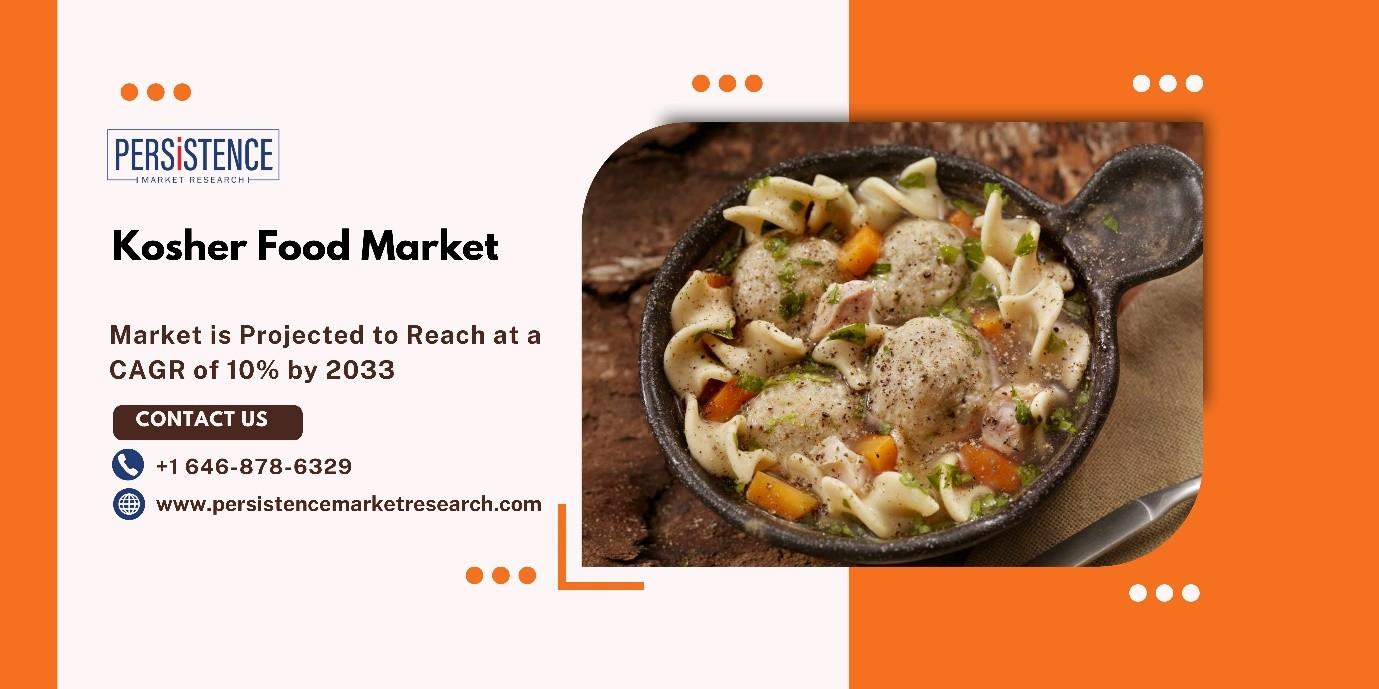
Kosher Food Market Introduction & Size Analysis:
The Kosher Food Market has seen significant growth in recent years, driven by increasing consumer demand for food that meets specific religious and ethical standards. Valued for its adherence to Jewish dietary laws, kosher food is gaining popularity not only among Jewish consumers but also among health-conscious and ethical eaters globally. The market is expanding as more people seek clean, traceable, and high-quality food products. Key growth drivers include the rising awareness of kosher certification, the perceived higher quality and safety of kosher foods, and the growing interest in specialty foods. The market is also benefiting from innovations in kosher food production, expanding product lines, and increasing availability in mainstream grocery stores. North America remains the largest market, with Europe and Asia-Pacific showing promising growth. The increasing diversity in kosher-certified products, including snacks, beverages, and packaged meals, is further fueling market expansion. However, the market faces challenges such as the higher cost of production and the complexities of maintaining strict kosher standards in a global supply chain. Overall, the Kosher Food Market is poised for continued growth, with both traditional and new consumer segments driving demand. The market for kosher food can be expected to expand at a value based CAGR of 10.0% and show an increase in revenue from US$ 47,240.2 Mn to around US$ 1,23,073.9 Mn by 2033.
The kosher food market, which adheres to Jewish dietary laws and practices, is experiencing significant growth globally. However, the Asia-Pacific region is set to become the dominant force in this sector by 2031. This emerging trend reflects the region's expanding consumer base, evolving dietary preferences, and increasing awareness of kosher dietary requirements. This blog explores the factors contributing to Asia-Pacific's dominance in the kosher food market, analyzes current market dynamics, and provides insights into future trends.
Key Factors Driving Growth in Asia-Pacific
Growing Jewish Population: The Asia-Pacific region has seen a steady increase in its Jewish population, particularly in countries like Australia and
India. This growing community contributes to the demand for koshercertified products, fostering market expansion.
Rising Awareness and Demand: There is a growing awareness of kosher food benefits beyond religious adherence. Many consumers are drawn to kosher food due to its perceived higher quality, cleanliness, and adherence to strict food safety standards. This increasing consumer interest is driving market growth.
Health and Dietary Preferences: Kosher food often aligns with broader health and dietary trends, such as the preference for organic and cleanlabel products. The emphasis on quality, hygiene, and the absence of certain additives in kosher food appeals to health-conscious consumers across the region.
Expanding Retail Channels: The expansion of retail channels and ecommerce platforms in Asia-Pacific is making kosher products more accessible to a wider audience. The growing presence of specialty stores, supermarkets, and online marketplaces that offer kosher-certified products is contributing to the market's growth.
Cultural Exchange and Globalization: Increased cultural exchange and globalization have facilitated the spread of kosher food products and practices. As multicultural societies become more prevalent, there is a growing acceptance and demand for diverse food options, including kosher-certified products.
Request for Sample: https://www.persistencemarketresearch.com/samples/9791
Market Dynamics
Regional Insights: Asia-Pacific's dominance in the kosher food market is supported by significant growth in countries like China, Japan, and South Korea. These countries are witnessing increased imports of kosher products and a rising number of local producers seeking kosher certification to meet consumer demand.
Competitive Landscape: The kosher food market in Asia-Pacific is becoming increasingly competitive, with both international and local players entering the space. Major global kosher food brands are expanding their presence in the region, while local manufacturers are obtaining kosher certification to cater to the growing market.
Impact of COVID-19: The COVID-19 pandemic has highlighted the importance of food safety and hygiene, which are integral to kosher practices. This heightened focus on health and safety has further boosted the demand for kosher-certified products, as consumers seek reliable and trustworthy food sources.
Future Trends
Increased Product Innovation: The kosher food market in Asia-Pacific is expected to see increased innovation, with new product offerings that cater to evolving consumer preferences. This includes the development of
kosher-certified versions of popular regional cuisines and innovative food products that align with kosher standards.
Expansion of Certification: More food manufacturers in Asia-Pacific are anticipated to seek kosher certification to tap into this growing market. The expansion of certification services and the establishment of local certification bodies will facilitate this trend and ensure a steady supply of kosher products.
Focus on Sustainability: Sustainability will become a key consideration in the kosher food market, with consumers and manufacturers increasingly prioritizing eco-friendly practices. This includes sustainable sourcing of ingredients, reduced packaging waste, and environmentally friendly production processes.
Growth in E-Commerce: The rise of e-commerce and digital platforms will continue to drive the growth of the kosher food market in Asia-Pacific. Online grocery shopping and delivery services will enhance accessibility to kosher products, catering to the growing demand from urban consumers.
Cultural Integration: As Asia-Pacific countries become more culturally diverse, the integration of kosher food into mainstream markets is expected to increase. This will involve greater collaboration between kosher food producers and local distributors to meet the needs of a diverse consumer base.
Conclusion
Asia-Pacific is poised to dominate the kosher food market by 2031, driven by factors such as a growing Jewish population, rising consumer awareness, and expanding retail channels. The region's unique combination of cultural exchange, health-conscious trends, and increasing accessibility to kosher products positions it as a key player in the global kosher food market. As the market continues to evolve, Asia-Pacific will likely see continued growth and innovation, solidifying its leadership in the kosher food sector.
Follow Us: LinkedIn | Medium | Twitter
